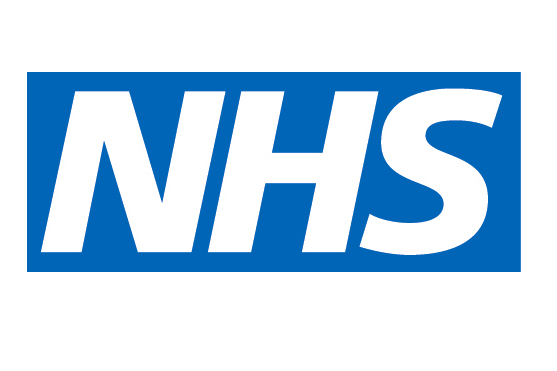Five steps to help cure NHS IT
The nightmare of NHS IT can be fixed. Here's five steps that can help it on its way.


A one-off cure is much preferable to palliative care. Would you rather continue being sick, regularly receiving treatment to relieve the symptoms, or not be sick at all?
For years, NHS IT has been unwell. Many have tried to find a cure, searching in vain for a platform that would link up different hospitals and trusts to create one system for them all.
The most recent attempt was the 11.4 billion National Programme for IT. It proposed a more collaborative system, the most significant part of which was a fully integrated electronic care records system. It was supposed to give doctors and nurses a quick system so they could provide the right treatment much quicker than they could before.
Yet despite genuinely good intentions, in this case, the cure hasn't worked.
The planned records initiative was ditched in August, according to an Independent report. It was an IT disaster.
The Department of Health (DoH) had already spent 2.7 billion on the 11.4 billion project, but was still unable to show what benefits the funding had spawned when asked to contribute to a Commons Public Accounts Committee report.
That report claimed there were some catastrophic failings on behalf of the project's organisers. In particular, bad management and an apparent inability to negotiate effectively to secure the best deals were pinpointed as serious issues.
Get the ITPro daily newsletter
Sign up today and you will receive a free copy of our Future Focus 2025 report - the leading guidance on AI, cybersecurity and other IT challenges as per 700+ senior executives
Like the Government's more well-publicised NHS reforms, the IT overhaul was supposed to be a high point of the Coalition's tenure. It turned out to be a real low.
It's a bad situation, one that seems almost intractable. Yet despite the naysayers, there are steps that can fix NHS IT. Here's five that can help the organisation get on the right path.
1. Get the Department of Health in order
Getting to the core of the problem often yields positive results. With the records project, IT aren't the ones to blame those that signed the original contracts are.
Taking a modular approach is almost always the best way to tackle major projects like the NHS patient record scheme.
Clearly there were problems at the top. It was during the procurement phase, when BT and CSC were promised vast sums of money to deliver the necessary infrastructure, when the sickness was spawned. What followed were broken promises, delays and in some cases the equipment has not even been delivered at all.
"I cannot see how this will be contractually fixed," said Ovum analyst Cornelia Wels-Maug. "The NHS has to go to the route of the problem and how can that be fixed."
The DoH is at the core of the problem. It needs to do two things: first, outline a solid strategy and, secondly, have negotiators who won't pander to big IT providers.
The two are intrinsically tied together. But what should the bare bones of that strategy look like?
"Taking a modular approach is almost always the best way to tackle major projects like the NHS patient record scheme and get them properly on track from the start," advises Rackspace vice president of cloud Fabio Torlini.
"First you select the right technology partners based on their respective competencies, next you perform an accurate assessment of the project parameters so that you can configure your IT plans to be commensurate with the requirements in hand - and then you start on day one constantly looking back over your shoulder to see how much flexibility you need to accommodate for in every forward step."
It's sensible advice. It's advice that perhaps wasn't followed in the initial stages of the NHS records initiative. How else could a project have such protracted problems without any fix? How could it have fallen by the wayside for so long?
From the Government's point of view, as well as keeping tight tabs on negotiators, laying out firmer guidelines on the systems themselves would benefit the NHS.
"If the Government lays out a common standards policy that ensures all equipment used is interoperable. From there, different care givers can actually build a structure that enables interoperability between an NHS trust in a region and nationwide," Wels-Maug added.
Tom Brewster is currently an associate editor at Forbes and an award-winning journalist who covers cyber security, surveillance, and privacy. Starting his career at ITPro as a staff writer and working up to a senior staff writer role, Tom has been covering the tech industry for more than ten years and is considered one of the leading journalists in his specialism.
He is a proud alum of the University of Sheffield where he secured an undergraduate degree in English Literature before undertaking a certification from General Assembly in web development.
-
 Master the multi-cloud with Global Fabric
Master the multi-cloud with Global Fabricwhitepaper Achieve internet speed and reliability to match your business ambitions
By ITPro
-
 Anatomy of a good meeting
Anatomy of a good meetingWhitepaper And how to eliminate horrid hybrids
By ITPro
-
 The best of both worlds: Building a successful hybrid workplace
The best of both worlds: Building a successful hybrid workplaceWhitepaper Research reveals that delivering consistent cloud collaboration experiences to users is critical to future ways of working
By ITPro
-
 uSwitch: UK miles away from superfast broadband targets
uSwitch: UK miles away from superfast broadband targetsNews The UK is no way near getting Government targets on superfast broadband, according to a uSwitch report, but BT thinks the research is rubbish.
By Kellan Howell
-
 IT Pro Start-Up Tour: Zscaler
IT Pro Start-Up Tour: ZscalerNews The NHS has placed trust in cloud-based security - should your business follow suit and sign up with Zscaler?
By Tom Brewster
-
 Cloud computing to go mainstream in 10 years?
Cloud computing to go mainstream in 10 years?News Executives from the technology industry believe it'll be a while yet before cloud computing becomes the norm.
By Jennifer Scott
-
 Vendors must help with confusion over cloud computing
Vendors must help with confusion over cloud computingIn-depth IT pros are apparently confused by the cloud, and the different ways IT services providers view it isn't helping.
By Miya Knights
-
 West Wales hospital cuts servers with virtualisation
West Wales hospital cuts servers with virtualisationNews New tech takes hospital from 40 to three servers while boosting services for staff and patients.
By Miya Knights

